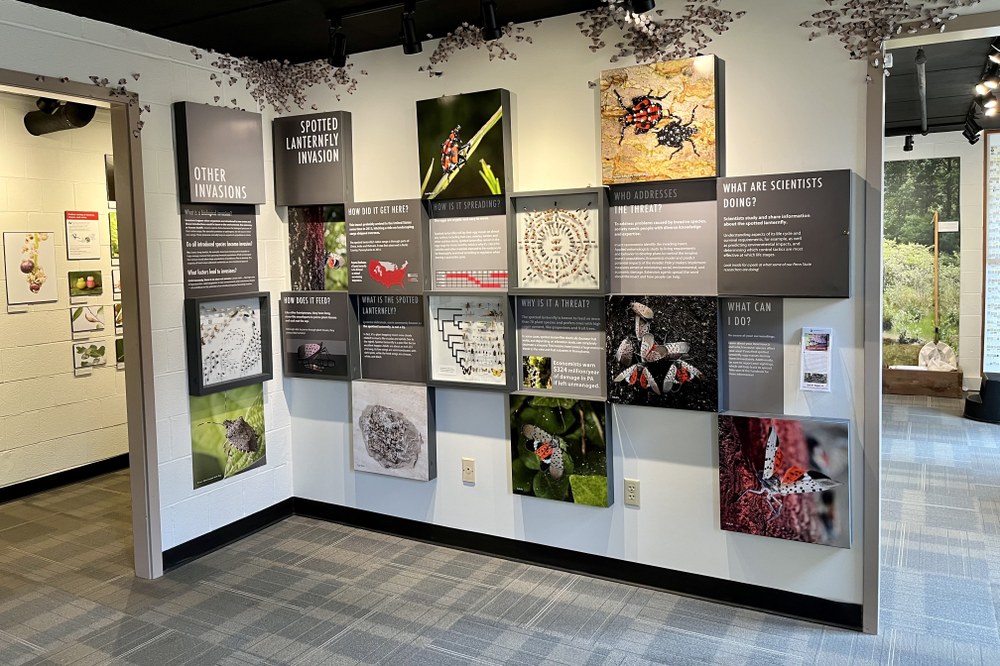What is a “biological invasion”? Learn about the recently introduced insect called the spotted lanternfly. Find out how it was introduced, why it’s a threat, and what’s being done to control the insect.

Spotted laternfly exhibit at the Frost Museum
What is a biological invasion?
Invasions happen when organisms are introduced to new areas and those introductions result in harm to the environment, the economy, or human health.
Invasive species thrive because the biological pressures of their native range, like specialist predators or pathogens, do not occur in their new range. These pressures normally keep an organism’s population in check.
Do all introduced species become invasive?
No. Exotic dung beetles, for example, have been introduced in Australia to help manage manure from growing livestock populations. If left unmanaged the manure would allow large populations of pestiferous flies to develop. The majority of food crops cultivated worldwide are also introduced species!
What factors lead to invasions?
Unfortunately, there is no clear-cut answer. Certain traits, like high rates of reproduction, rapid adaptation to new environments, and evolutionary history, all contribute to the potential of an introduced species becoming invasive.
What is the spotted laternfly?
Find out more about spotted laternfly by visiting the exhibit or Penn State Extension's resources on this invasive species.
The Frost Entomological Museum
Hours: Monday-Friday 10am-4pm
The Frost Entomological Museum
Hours: Monday-Friday 10am-4pm

